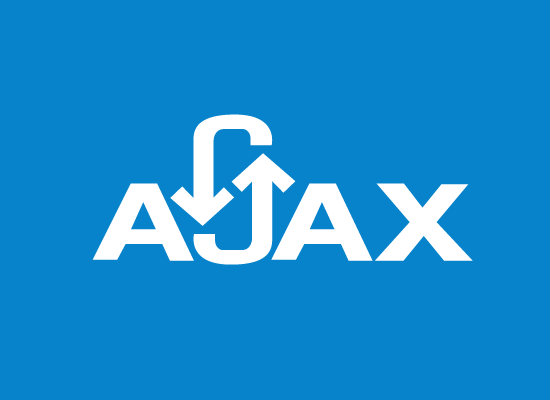Ajax
 AJAX is the art of exchanging data with a server, and updating parts of a web page - without reloading the whole page
AJAX is the art of exchanging data with a server, and updating parts of a web page - without reloading the whole pageWhat is AJAX?
AJAX = Asynchronous JavaScript And XML.
In short; AJAX is about loading data in the background and display it on the webpage, without reloading the whole page.
Examples of applications using AJAX:
Gmail, Google Maps, Youtube, and Facebook tabs.
What About jQuery and AJAX?
jQuery provides several methods for AJAX functionality.
With the jQuery AJAX methods, you can request text, HTML, XML, or JSON from a remote server using both HTTP Get and HTTP Post - And you can load the external data directly into the selected HTML elements of your web page!
jQuery - AJAX load() Method
jQuery load() Method
The jQuery load() method is a simple, but powerful AJAX method.
The load() method loads data from a server and puts the returned data into the selected element.
Syntax:
$(selector).load(URL,data,callback);
The required URL parameter specifies the URL you wish to load.
The optional data parameter specifies a set of querystring key/value pairs to send along with the request.
The optional callback parameter is the name of a function to be executed after the load() method is completed.
The optional callback parameter specifies a callback function to run when the load() method is completed. The callback function can have different parameters:
responseTxt - contains the resulting content if the call succeeds
statusTxt - contains the status of the call
xhr - contains the XMLHttpRequest object
The following example displays an alert box after the load() method completes. If the load() method has succeeded, it displays "External content loaded successfully!", and if it fails it displays an error message:
Example\
$("button").click(function(){
$("#div1").load("demo_test.txt", function(responseTxt, statusTxt, xhr){
if(statusTxt == "success")
alert("External content loaded successfully!");
if(statusTxt == "error")
alert("Error: " + xhr.status + ": " + xhr.statusText);
});
});
jQuery - AJAX get() and post() Methods
The jQuery get() and post() methods are used to request data from the server with an HTTP GET or POST request.
HTTP Request: GET vs. POST
Two commonly used methods for a request-response between a client and server are: GET and POST.
GET - Requests data from a specified resource
POST - Submits data to be processed to a specified resource
GET is basically used for just getting (retrieving) some data from the server. Note: The GET method may return cached data.
POST can also be used to get some data from the server. However, the POST method NEVER caches data, and is often used to send data along with the request.
To learn more about GET and POST, and the differences between the two methods, please read our HTTP Methods GET vs POST chapter.
jQuery $.get() Method
The $.get() method requests data from the server with an HTTP GET request.
Syntax:
$.get(URL,callback);
The required URL parameter specifies the URL you wish to request.
The optional callback parameter is the name of a function to be executed if the request succeeds.
The following example uses the $.get() method to retrieve data from a file on the server:
Example
$("button").click(function(){
$.get("demo_test.asp", function(data, status){
alert("Data: " + data + "\nStatus: " + status);
});
});
The first parameter of $.get() is the URL we wish to request ("demo_test.asp").
The second parameter is a callback function. The first callback parameter holds the content of the page requested, and the second callback parameter holds the status of the request.
jQuery $.post() Method
The $.post() method requests data from the server using an HTTP POST request.
Syntax:
$.post(URL,data,callback);
The required URL parameter specifies the URL you wish to request.
The optional data parameter specifies some data to send along with the request.
The optional callback parameter is the name of a function to be executed if the request succeeds.
The following example uses the $.post() method to send some data along with the request:
Example
$("button").click(function(){
$.post("demo_test_post.asp",
{
name: "Donald Duck",
city: "Duckburg"
},
function(data, status){
alert("Data: " + data + "\nStatus: " + status);
});
});
Then we pass in some data to send along with the request (name and city).
The ASP script in "demo_test_post.asp" reads the parameters, processes them, and returns a result.
The third parameter is a callback function. The first callback parameter holds the content of the page requested, and the second callback parameter holds the status of the request.









